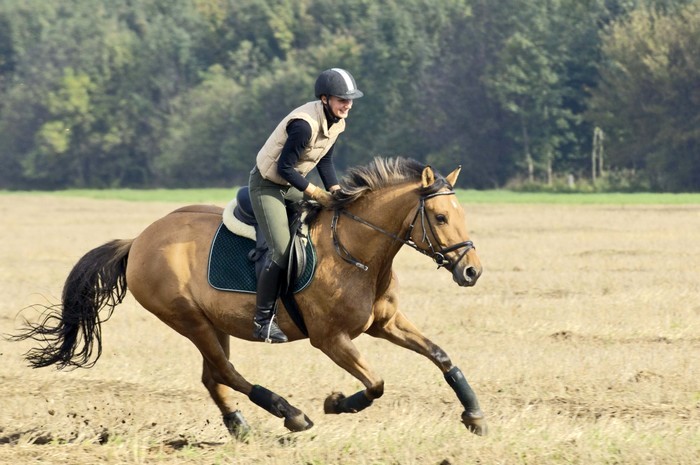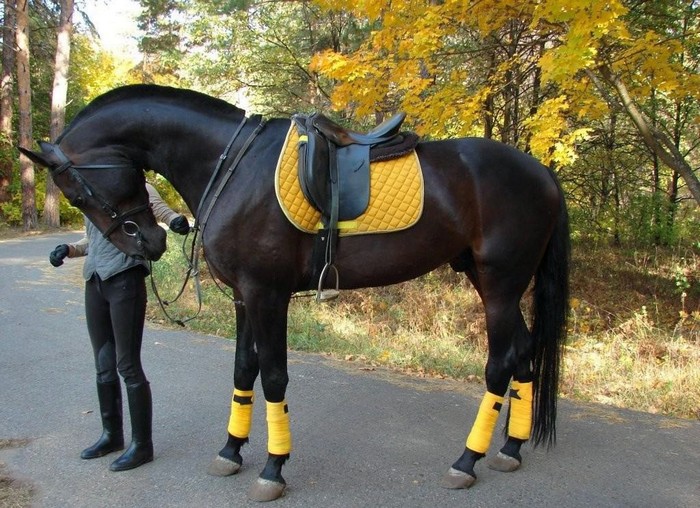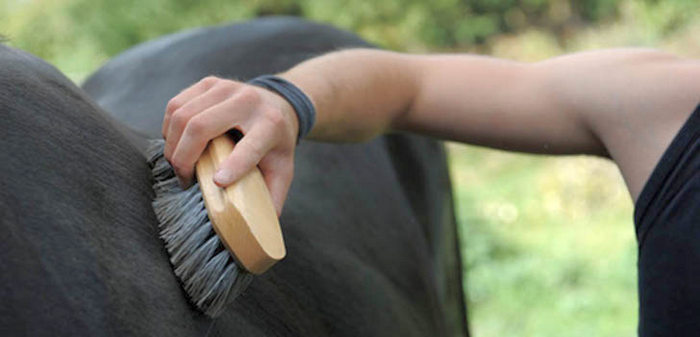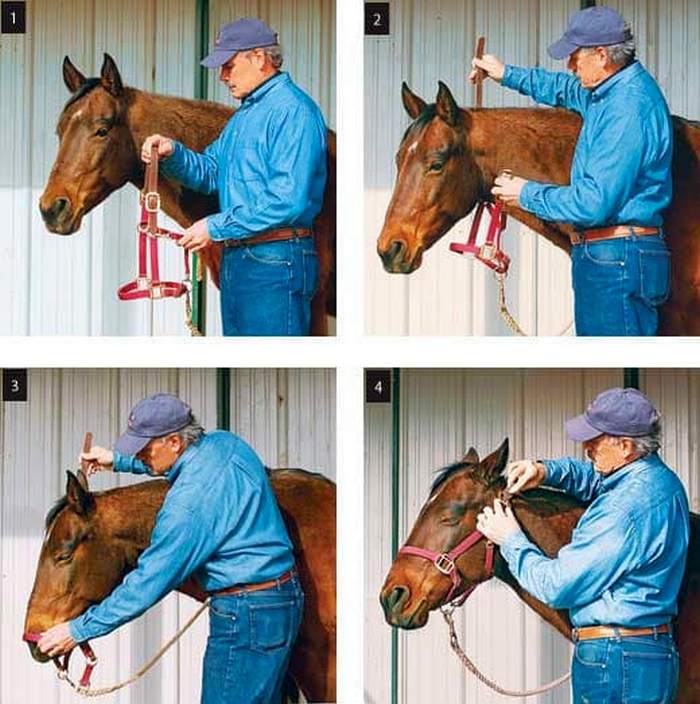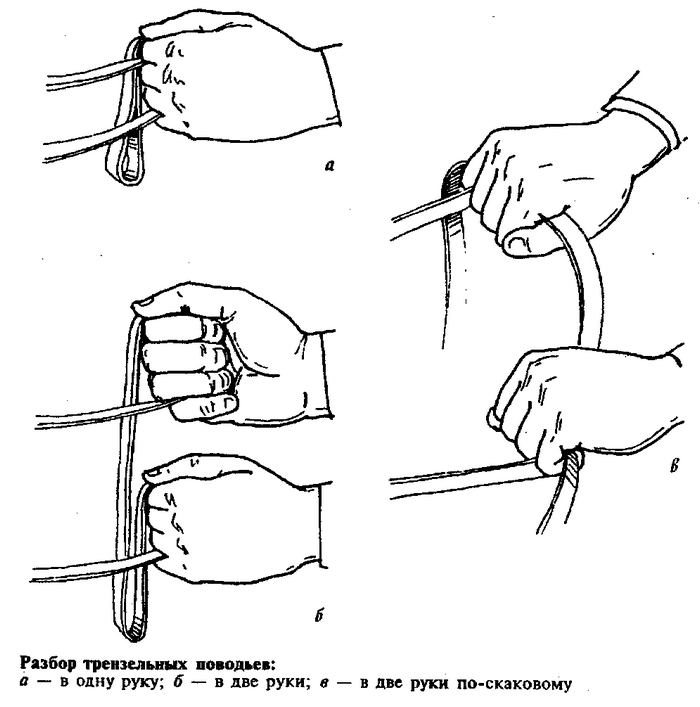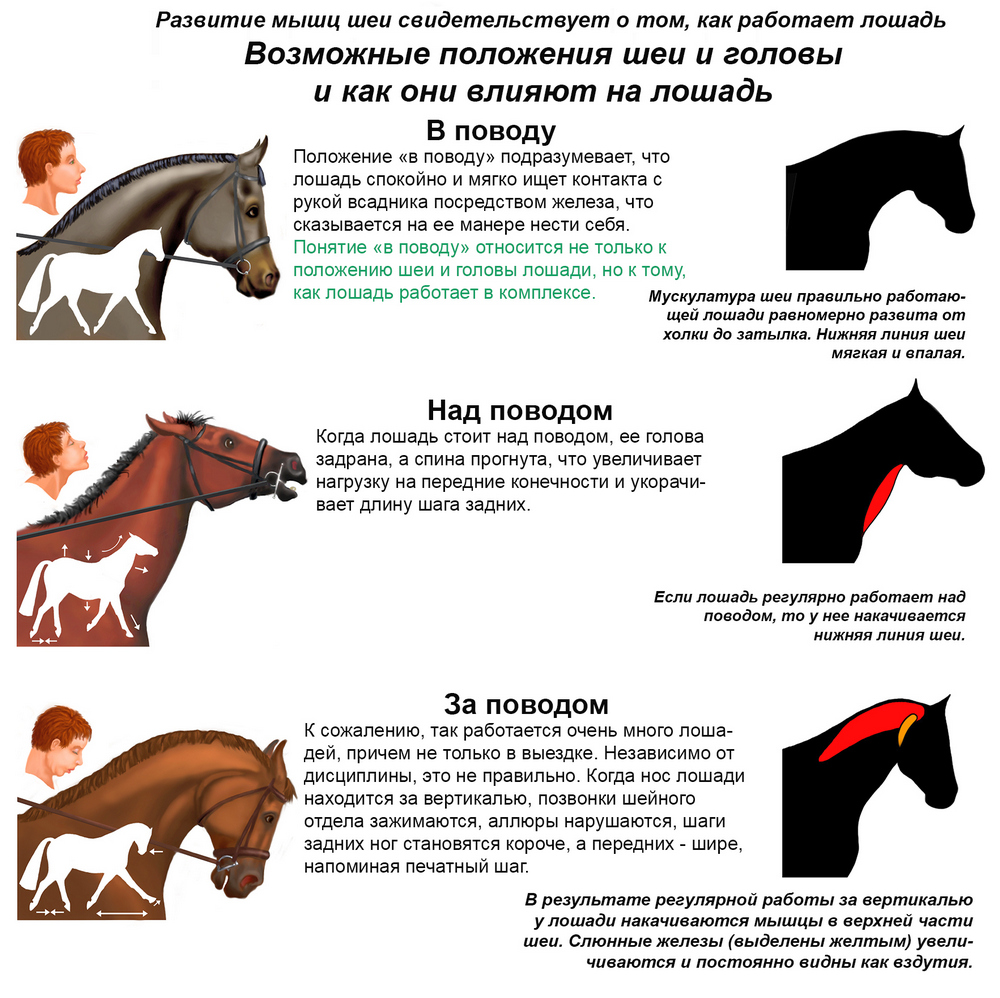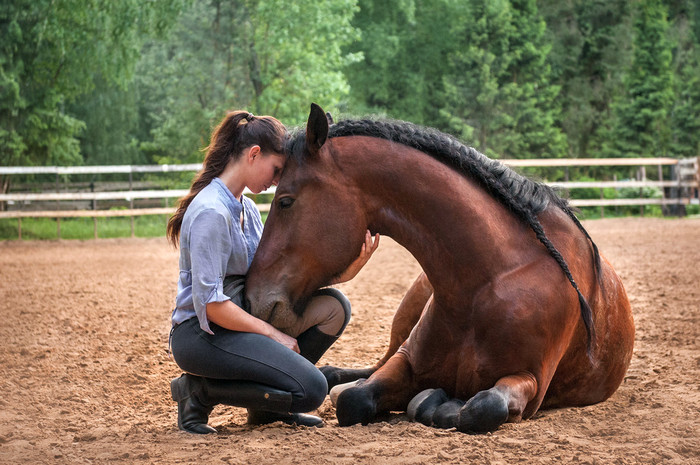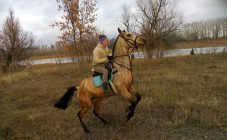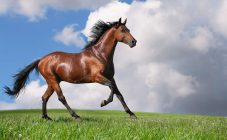Content:
Good horse handling is about getting the animal to do whatever the rider requires. The horse must move forward freely and of its own free will, make turns, stop without problems, and also avoid obstacles. When executing these commands, the animal should not feel constraint in movement, the presence of freedom to perform actions is necessary.
Preparatory activities
Breaking wild horses is a long and laborious process. By their nature, the purpose of horses is to carry a saddle and a team. Before that, they need to be trained.
Depending on the type of use, animals undergo certain training. They need to be taught to obey, to correctly fulfill the requirements of the rider. You can understand how a horse can be controlled, its physical strength and endurance through a dressage lesson.
When the horse is being trained, you need to talk to it affectionately. It will not be superfluous to be patient, persistently pass on your requirements in order, using several techniques in a circle. How dressage goes depends on the person involved in the training.
Since the beginner riding horse has herd habits, it will take a lot of patience, perseverance and courage to train it. It is necessary to draw up a training plan in such a way that a small number of techniques alternate strictly in order. The more repetitions of the same exercises a horse performs, the more likely it is to conquer the animal.
It has been proven to speed up learning by using affectionate words when requirements are met correctly. Of particular importance here is intonation, the tone with which they praise, because all this is deposited in the subconscious of the animal. Praise and punishment should follow when demands are met or abandoned. Over time, the mare will consciously begin to do whatever she has been trained to do in order to get praise again. Food can also be used as a reward. To control a horse, you need: a rein, a leg and the correct slopes of the rider's body. Mastering these complex actions explains how to control a horse. More on this later.
How to saddle a horse
Horseback riding is not an easy process. The main thing is reliable and correctly fixed ammunition, on which the race depends. To prevent dressage from starting with problems, it is worth considering what the saddle technique consists of.
Saddling horses consists of several stages:
- cleaning the horse's surface;
- installation of a bridle;
- dressing the saddle on the back of the animal.
Before you start putting on the harness, you need to communicate with the horse, stroke and calm down in a calm tone. The animal must trust the rider; there must be mutual understanding between both participants in the process. When the horse has managed to win over, you can proceed directly to the saddle.
First of all, it is necessary to conduct an external examination of the horse, to make sure that it is physically ready for the ride. It is especially important to find wounds, abrasions and small swellings in the area of the bridle and saddle attachments. Take special care to examine the abdomen and the area in front of the front legs. All problem areas found should be immediately treated with an antiseptic, and healing preparations should be applied. The main thing is that the disease does not cause irritation, soreness and discomfort.
Additionally, it is necessary to exclude the presence of skin rashes, thaler plaques and other irritations. In such areas, the animal will not allow itself to be cleaned, it will feel irritable. Paralysis of individual parts of the animal's body can be observed. The first step is to exclude equine breeding disease. The instruction suggests a comprehensive treatment of such symptoms.
If no problems are found, you can proceed to the first stage - cleaning. To do this, you need to use a brush (scraper), invented specifically for such purposes. Initially, clean the left side, in the direction from the head to the rump, gradually sinking to the feet. All actions are performed extremely carefully, because the skin of the animal is easily injured. A separate comb is used for the mane and tail (it can be metal or plastic). Once you've finished cleaning, you can move on.
Next, you need to put on the bridle. This stage consists in carefully putting the bridle on the head of the horse. All movements are carried out slowly, carefully. It is not allowed to pull and jerk the installed bridle, as such movements can lead to injuries to the mouth, lips and teeth.
The sequence and essence of the process is as follows: standing on the left side, not far from the horse, the reins are slowly thrown around the neck. Next, the right hand grabs the horse's head, between the eye and nose, it should be tilted down. Now the capsule is threaded and the structure is installed in the mouth.
Even if the cunning animal resists, you cannot knock and irritate him. It is necessary to remember about calmness, perseverance and a patient attitude. This process is best accelerated by pressure with the free hand on the base of the mouth. The location in this part of the soft tissues of the gums, when pressed, forces the mouth to open, which allows you to immediately install the bit in the required place.
The next step is to put on the bridle. The bridle should be put on so that its location is not too high in the frontal part and not too low. If you have bangs, it must also be pulled out from under the belts, otherwise, in the process of dressing, the hair will cause the horse to disobey (the bangs will tickle the frontal part). When everything is done correctly, you can tighten the belts.
Every experienced equestrian trainer will tell you that, standing behind, animals can sense danger, which leads to aggressive behavior. Also, you cannot go around the horses behind. Anyone should always be in sight.
When the ammunition is secured, you can try to climb up. Such actions are performed as follows:
- Standing on the left side, you need to turn to face the animal. Together with this, the rein is thrown closer to itself, slightly stretched;
- With the hand holding the reins, you need to grab the mane. With the other hand, stick to the saddle. The left leg is installed in the stirrup, it is necessary to sharply unfold the body and at the same time throw the free leg over the saddle;
- Move your right leg over the croup as quickly as possible and become a foot in the stirrup.
By following all the steps clearly and consistently, it is easy to start a detour. You also need the ability to properly sit on a horse:
- The back should be straight and even. Hands are not tense, relaxed hold the rein;
- When placing the foot in the stirrup, the heel is below the level of the toe;
- Do not make sudden movements without urgent need;
- Sitting on horseback to get rid of panic and fear (horses will feel it). You do not need to hold onto the stirrups with force.
Nuances of correct and safe driving
It takes a lot of training and perseverance to control your horses properly. The main thing for newcomers to this sport is to carefully and accurately perform all actions. Correct management consists in the following rules:
- Body movements. Only works with trained horses. When such a command is given, the horse immediately sees what needs to be done. Each slope has its own meaning;
- Using the leg, giving a command with the inside of the leg pressed against the body of the animal;
- Reins Guidance - Used to indicate the exact direction.
So that in the process of interacting with the horses there are no problems, the rider must be able to use all the commands at the same time. Also, riders can additionally use other methods of influence. These include spurs and whips.
The use of whips is not capable of injuring the animal, although this device looks quite scary. By these methods, the rider ensures the unquestioning fulfillment of all his requirements. It is a common mistake to use whips to punish not conquering. Their purpose is light cotton on the side where the leg is applied. At the same time, in order for the horse to understand why he is being beaten, such blows should be made within a few seconds after the failure to perform certain actions. The use of such methods of influence with delay makes the use of these attributes irrelevant.
The spurs are designed for more efficient use of the leg. Its use is allowed only for experienced riders. Beginners can use such items only to conquer an animal with a strong character, stubbornly resisting. Only spurs with medium sharpness are allowed. We must not forget about control over the force of blows made towards the horses.
Body language and rapport with the horse
Before riding a horse, you must learn to understand it. Before galloping a horse, every beginner must master his own body, understand every horse step and be able to speak with gestures.
The main thing is to sit correctly in the saddle. The skeleton must be constantly in the same position. The rider must follow all the rules, listen carefully and follow the actions described in detail by the trainer. The initial task is to maintain balance while sitting astride. To understand how to ride a horse correctly, you need to perform the following simple steps while driving:
- All body actions are carried out in the saddle. It is necessary not to lose the connection between the body and the saddle, otherwise control over the horse and own balance will be lost;
- By tilting the body forward, the rider begins to send a command about the desire to go forward. Every movement should be smooth and deliberate;
- Leaning back, the load on the horse's legs is weakened, which means the need to stop;
- Side bends mean turning.
Leg work
Having an idea of the correct position in the saddle, there should be no questions about working with the leg. When properly seated, the inside of the leg should be snuggled tightly and firmly against the animal. In this case, the knees should always be relaxed. An old, trained riding horse fulfills all requirements exactly. Therefore, in order to know how to ride a horse, you need to learn and clearly follow the following commands:
- to give a signal about the start of movement, you need to press on the sides of the horse closer to the back girth;
- pressing with one leg to the side, the rider directs the horse in the other direction from the place of the device used;
- for a horse to run like a trot, you need to alternate between smooth and sharp kicks with the leg.
Features of working with reins
With the help of the reins, the horse becomes fully controllable, since in this way the rider can influence the position of his head, neck, and the same can slow down or accelerate.The reins should not be considered a means of keeping in the saddle. Typically, the reins are used in conjunction with the legs and precise body inclinations to help give commands to the horses correctly. To perform maneuvers, one must understand how to hold the horse's reins. It is necessary to divide the reins into:
- internal;
- facing the middle of the arena;
- outdoor;
- arena facing outward.
Before you can force the horse to walk, you need to learn to act gradually, smoothly. When giving a command, the hands should be sensitive, the actions should be soft, because interaction with the animal is carried out through the reins pressing on the mouth.
There are different types of riding a horse, based on this, different methods of controlling the reins are applied. The drill method is suitable for active walks and has some features:
- the rein is held with the right hand, it must be aligned and moved to the left;
- the right rein is placed between the middle and index fingers, and for the left - the space between the little finger and ring fingers;
- the rein is tightly clenched into a fist, you need to fix everything with your thumb;
- hand position - fingers down.
Having correctly positioned the rein in your hands, it is worth understanding how to use it. Controlling a horse using the reins consists of a few simple rules:
- you need to shake the reins to start moving;
- to stop - you need to pull it back;
- to make turns or make a turn, you need to pull one of the reins.
Complex use of commands
For precise control, the rider must feel the animal. The following are examples of the rider's timely response.
To move forward, the rider needs:
- let the reason go, giving freedom in the movements of the horse's head;
- press with your legs;
- tilt the body forward.
When done correctly, the horse will start out in slow strides. You can speed up the movement:
- slightly pulling the reins towards you;
- by making a sharp jolt with the legs;
- then tilt the body forward even more.
To communicate an intent to rotate:
- you need to pull the rein from the side where you want to fold;
- on the same side, press harder on the side with your leg;
- if necessary, move the body in the direction of rotation;
- when the turn is over, the leg moves slightly.
The stop is done like this:
- lowering your hands, the reins are pulled down;
- the body must be tilted back;
- Legs press on the sides until the horse comes to a complete stop.
Features of horse riding
While learning to ride in specially equipped arenas, attention is paid to several techniques of movements in turns. These techniques include techniques:
- Volt - the horse moves in a circle, the diameter of which is from 5 to 10 m;
- Half volt - the same as volts. The only caveat - when passing ¾ of the circle, the horse is turned in the opposite direction;
- Serpentine - complex use of movement along semicircles and straight ahead. In the conditions of arenas, this technique is performed from wall to wall.
At first glance, horseback riding is a difficult and unlearning process. To ride a horse, you need to know the features that are important, as well as the rules of the road. First of all, compliance with the rules ensures the protection of the animal and the rider.
For training newcomers, specially designed schemes are used. For this, open areas, fields are often used, and then they are taught to move in certain directions. All these are integral parts of training, because you need to be able to avoid obstacles and move correctly.
